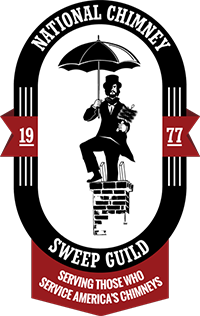Spring is the time of new life. Trees burst into new life with fresh green leaves, soft grass covers your yard, and plants break through the ground. It’s the time baby animals are born and baby birds break out of their shells. One such bird is the chimney swift.
If you see a smudge-gray little bird with a cigar-shaped body, you’re probably seeing a chimney swift. These birds also have curving wings and a very short beak. Chimney swifts are found in the eastern United States. This little bird spends most of its life in flight. When it does take a break, it clings to vertical walls instead of perching in a normal fashion, so you can often find them in caves or in hollow trees. Another place they love to perch is in your chimney. This can be a problem!
More About the Swift
In the early years of our nation’s history, chimney swifts typically nested in hollow trees. When the pioneers spread across the country, they chopped down those trees, and chimney swifts were left without homes. They adapted pretty quickly. However, as homes with chimneys sprang up, these chimneys made ideal places to nest. Unfortunately, over time chimneys fell into disuse and the number of chimney swifts began to decline. Because of this, according to the Humane Society of the United States, the chimney swift is a protected species under the Migratory Bird Treaty Act, and “anyone who knowingly destroys birds or nests that might contain eggs or young can be fined or penalized.”
Do Chimney Swifts Hurt Your Chimney?
Chimney swifts are a tiny bird, and that means they build tiny nests. That means that their nests, unlike other birds’ nests, won’t be a fire hazard in your chimney. In fact, chimney swifts aren’t really a problem when it comes to building a nest in your chimney. However, they can be an annoyance because they do make quite a bit of noise when the baby birds begin to hatch. These noises will generally only last around two weeks.
Other than that, chimney swifts won’t really harm the inside of your chimney. In fact, if you have a newer chimney made of metal flue pipes rather than clay liners, it may be a dangerous situation for the swifts. This is because they can’t grip the metal as easily. Unfortunately, this could cause them to be trapped or fall into the fireplace, which could cause them to be injured or even die. In this case, you might want to consider installing a chimney cap to keep them out.
How To Remove Them
If you have a chimney swift in your chimney, you should have the nest removed after they leave the nest in the fall. When they return in the spring, they may try to use that same nest and it may not be stable enough to support their eggs. Call in a professional chimney cleaning company – Chim Cheroo Chimney Service. They’ll not only remove the nest, they can also recommend measures to stop chimney swifts from coming back into your chimney. For instance, installing a chimney cap, if that’s what you prefer. While they’re there, ask them to inspect and clean your chimney to get it ready for the next fireplace season!


